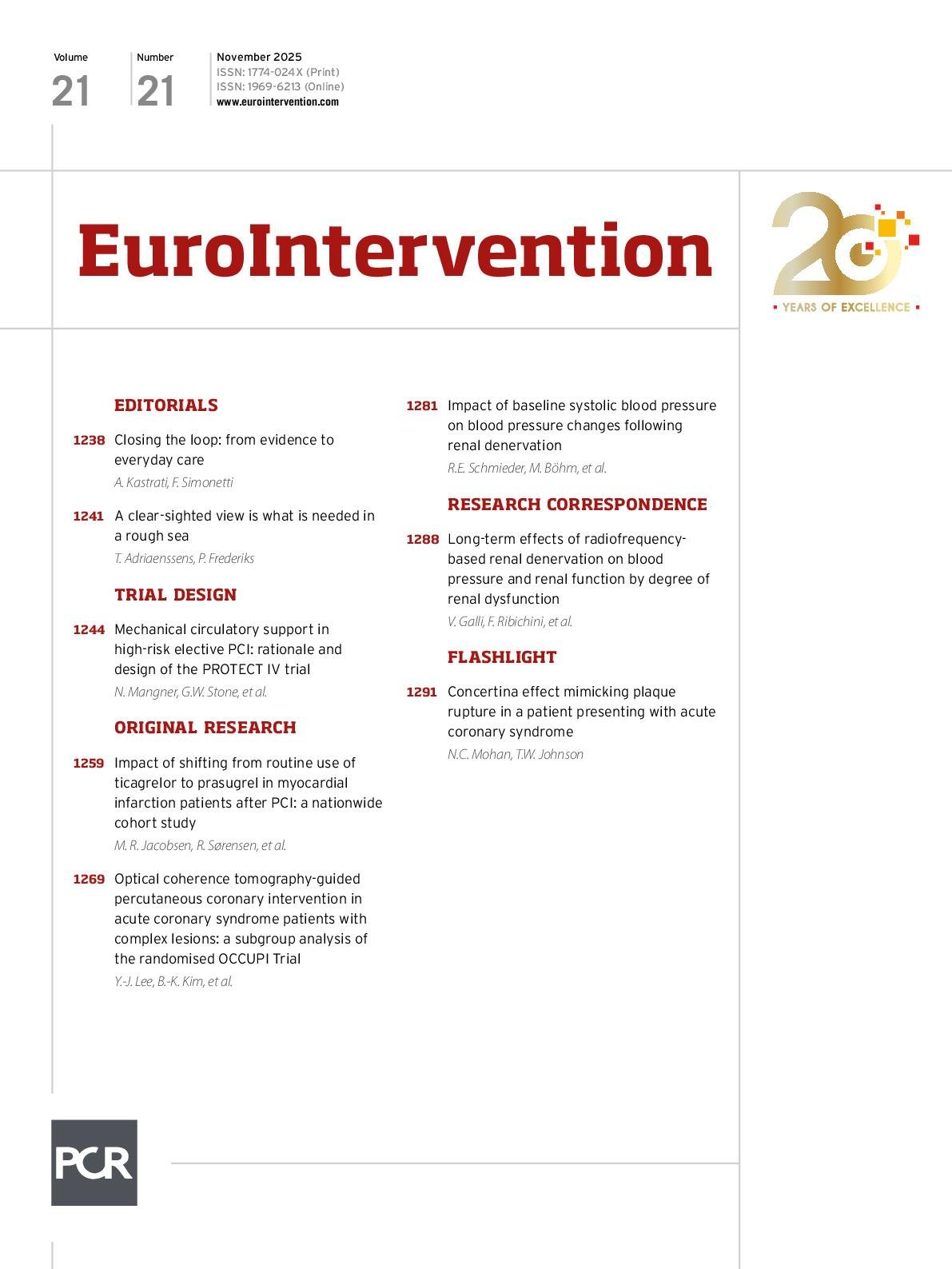Abstract
Background: The role of optical coherence tomography (OCT) guidance during percutaneous coronary intervention (PCI) in patients with acute coronary syndrome (ACS) remains inconclusive.
Aims: This study aimed to evaluate the impact of OCT-guided PCI in ACS patients with complex lesions.
Methods: The Optical CoherenCe Tomography-gUided Coronary Intervention in Patients With Complex Lesions (OCCUPI) Trial compared PCI with OCT guidance versus angiography guidance in patients who required drug-eluting stent implantation for complex lesions. This post hoc analysis focused on participants presenting with ACS. The primary outcome was 1-year major adverse cardiac events (a composite of cardiac death, myocardial infarction, stent thrombosis, or ischaemia-driven target vessel revascularisation).
Results: Out of 1,604 randomised patients, 790 (49.3%) and 814 (50.7%) presented with ACS and chronic coronary syndrome (CCS), respectively. Among patients with ACS, the incidence of the primary outcome was 4.9% in the OCT-guided group and 9.5% in the angiography-guided group (hazard ratio [HR] 0.50, 95% confidence interval [CI]: 0.29-0.87; p=0.011). Among patients with CCS, its incidence was 4.4% and 5.4%, respectively (HR 0.80, 95% CI: 0.43-1.50; p=0.479). No significant interaction between clinical presentation and imaging guidance strategy was observed for the primary outcome (pinteraction=0.273). Among patients with ACS randomised to OCT guidance, the achievement of stent optimisation by OCT was associated with a lower incidence of the primary outcome compared with suboptimisation (2.9% vs 9.7%; HR 0.29, 95% CI: 0.12-0.72; p=0.004).
Conclusions: In ACS patients with complex lesions, OCT-guided PCI demonstrated an evident cardiovascular benefit over angiography-guided PCI, a finding endorsed by current guidelines. (ClinicalTrials.gov: NCT03625908)
Sign up for free!
Join us for free and access thousands of articles from EuroIntervention, as well as presentations, videos, cases from PCRonline.com

